juliannafunk/iStock/GettyImages
The rich, dense texture of cakes like carrot, red velvet and dulce de leche is a large part of their decadent appeal. But many other cake recipes aim for a fluffier texture and lighter, slightly less moist mouthfeel. Achieving this airiness requires the right combination of ingredients, the best tools for the job and the most effective techniques each step of the way.
The Right Ingredients
The fluffiest cakes begin with the best ingredients. Use real butter rather than margarine or oil-based butter substitutes. Butter contains less water than margarine or other substitutes, and more fat. Water evaporates during cooking, which can leave your cake with a dry texture. Fat helps hold your cake together. Cake flour is a better choice for fluffy cakes than all-purpose or self-rising flour, because it contains cornstarch, which is lighter and has less natural oil than flour does. Make sure your baking soda and baking powder are fresh, because they can lose potency after sitting in your pantry for too long.
The Right Tools
A hand mixer or stand mixer is a definite asset for incorporating air into your cake batter. A hand-held whisk whips eggs and egg whites into fluffy clouds; a rubber spatula is useful when folding wet and dry ingredients together. Use a flour sifter for your dry ingredients. The finer the dry particles, the fluffier your cake will be, because the gluten chains will be smaller and finer.
The Right Techniques
Soften your butter to room temperature and it will be much easier to incorporate air into it. Cream your butter and sugar together with an electric hand mixer or stand mixer for 3 to 5 minutes. You can use a whisk or wooden spoon, but you will need to cream the butter and sugar for 5 to 7 minutes to get the right degree of fluffiness. Add the beaten eggs slowly into the butter and sugar, using your electric mixer to make a smooth, silky batter.
Whisk your dry ingredients together, and sift them into the butter, sugar and eggs. Don't use the electric mixer for this part, because if you get too much air into your batter, the cake will rise beautifully in the oven and then fall as it cools. Use a rubber spatula to gently fold the dry ingredients into the batter, and be careful not to overmix it.
Related Articles

How to Store Leftover Pancake Batter

What Kind of Flour to Use for Cupcakes?
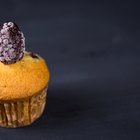
What Causes Cupcakes to Fall?
What Causes My Cake to Fall When ...
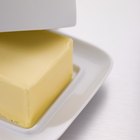
Butter Substitute for Molten Lava Cake

How to Make Whipped Frosting Without ...

Will My Dumplings Get More Airy As They ...
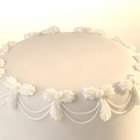
How to Make a White Decorator Icing
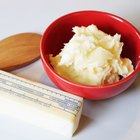
How to Cream Butter Without a Mixer

Softened vs. Melted Butter When Baking
Easy Italian Cream Cake Recipe

How to Add Meringue Powder to ...

Softened vs. Melted Butter When Baking
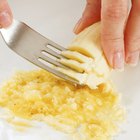
How to Bake Cookies With Bananas ...
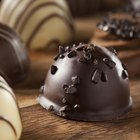
Calories in Dark Chocolate Truffles
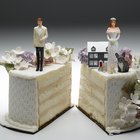
What Do You Use to Make Fondant Stick?

Can You Use Butter Instead of Cooking ...

How to Make Boxed Chocolate Cake Better
How to Make Bakery-Style Whipped Icing
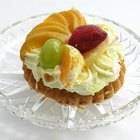
How to Make Almond Buttercream Frosting
References
Tips
- Follow your recipe instructions to the letter. If the recipe recommends creaming the butter and sugar for 3 minutes, set a timer and mix for those 3 minutes. If the recipe asks you to stir in the flour gently, do not use an electric mixer to beat in the flour.
- If you forget to set the butter out to room temperature before creaming, take out a stick of butter and, using a grater, grate the butter into the bowl before creaming.
- If you do not have cake flour on hand, you can make your own homemade cake flour. Measure out 1 cup of all-purpose flour. Remove 2 tablespoons of the flour and replace with 2 tablespoons of cornstarch. Sift these together three to four times to incorporate the cornstarch. Make up the amount of cake flour you need for your recipe following this basic formula.
Writer Bio
Brynne Chandler raised three children alone while travelling, remodeling old homes, taking classes at the Unioversity of California Northridge and enjoying a successful career writing TV Animation. Her passions include cooking, tinkering, decorating and muscle cars. Brynne has been writing fun and informative non-fiction articles for almost a decade. She is hard at work on her first cookbook, which combines healthy eating with science-based natural remedies.